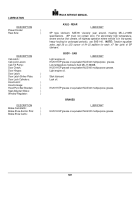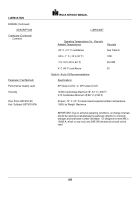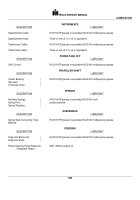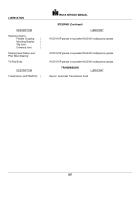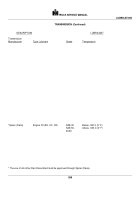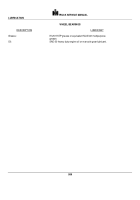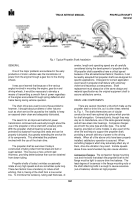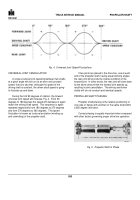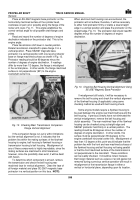TM-5-3805-254-14-P-2 - Page 598 of 894
TRUCK SERVICE MANUAL
PROPELLER SHAFT
General
Fig. 1 Typical Propeller Shaft Installation
GENERAL
One of the major problems encountered in the early
production of motor vehicles was the transmission of
power from the engine through a gear box to the driving
wheels.
It was soon learned that because of the various
angles involved in mounting the engine, gear box and
driving wheels, it would be necessary to develop a
means of transmitting a smooth flow of power regardless
of the angles encountered through spring deflection and
frame flexing during vehicle operation.
The chain drive was used to solve these problems;
however, it brought about problems of other natures-
such as short service life caused by the inability to keep
an exposed chain clean and adequately lubricated.
The search for an improved method of power
transmission continued and eventually brought about the
use of the propeller or drive shaft with universal joints.
With the propeller shaft all bearing surfaces are
protected by dustproof housings and seals and can be
properly lubricated, thus greatly extending the service life
of its components.
This eliminated the problems
involved with the use of the chain drive.
The propeller shaft as we know it today is
constructed of tubing rolled from flat steel and butt or
seam welded.
This insures a more uniform wall
thickness, providing better balance than can be obtained
from drawn tubing.
Propeller shafts of today’s vehicles occasionally
rotate at very high speeds and are sometimes quite long.
These two factors have a tendency to induce shaft
whirling, that is, flexing of the shaft from a true center
line.
To minimize this tendency, tubing wall thickness, di
ameter, length and operating speed are all carefully
considered during the development of propeller shafts.
All propeller shaft assemblies have a critical speed
because of the aforementioned factors; therefore, it can
be readily accepted that propeller shafts are designed for
specific applications.
Disregard for correct application
could result in propeller shaft failure with extremely
violent and hazardous consequences.
Shaft
replacement must always be of the same design and
material specification as the original equipment shaft to
assure satisfactory service.
DRIVE LINE COMPONENTS
There are several important units which make up the
propeller shaft or drive line, as it is often times referred
to, Fig. 1.
The shafts themselves are of tubular
construction and have splined slip yokes which provide
for shaft elongation.
Universal joints, though they may
vary as to manufacture, are of the same general design,
and all have steel roller bearings.
Companion flanges
are of both the yoke type and disc type.
The center
bearing, provided on some models, is also a part of the
drive line and helps to support the propeller shaft,
providing a smooth delivery of power to the driving
wheels.
When all of the above units have been properly
installed, satisfactory operation is assured.
When
something happens which may adversely affect any of
them, drive line vibration may result.
Vehicle speeds
above those recommended may also cause vibration.
Companion Flanges:
The companion flange mounting
nuts and the bolts that attach the propeller shaft to the
flange must be tight to assure drive line balance.
The
least degree of looseness in the flange mounting nuts or
the shaft attaching bolts is enough to cause excessive
(out-of-balance) vibration at high propeller
591
Back to Top

